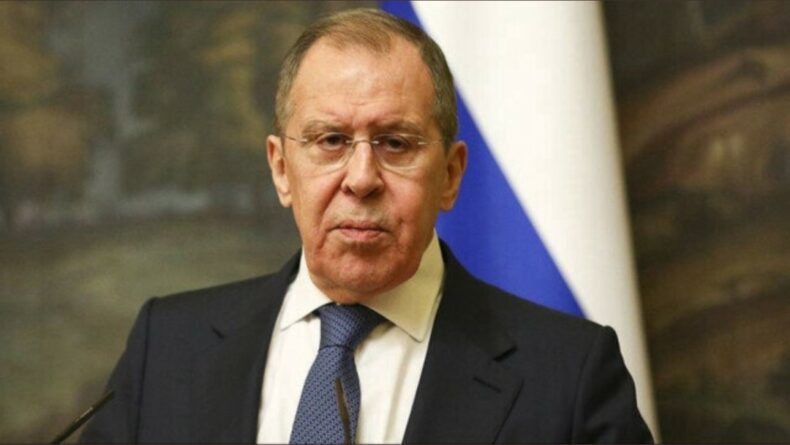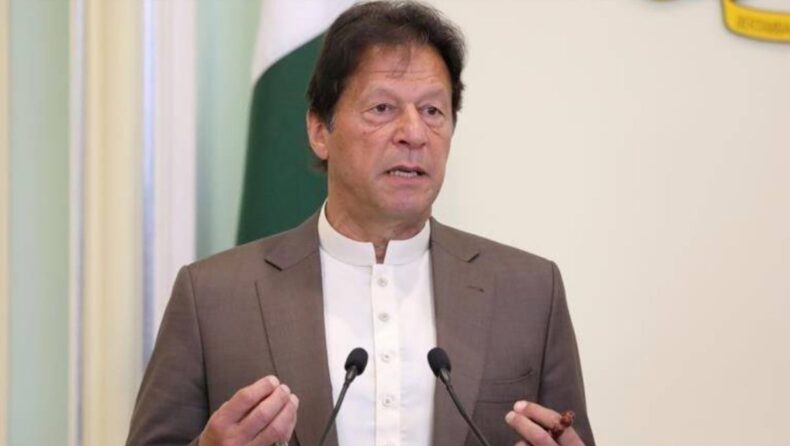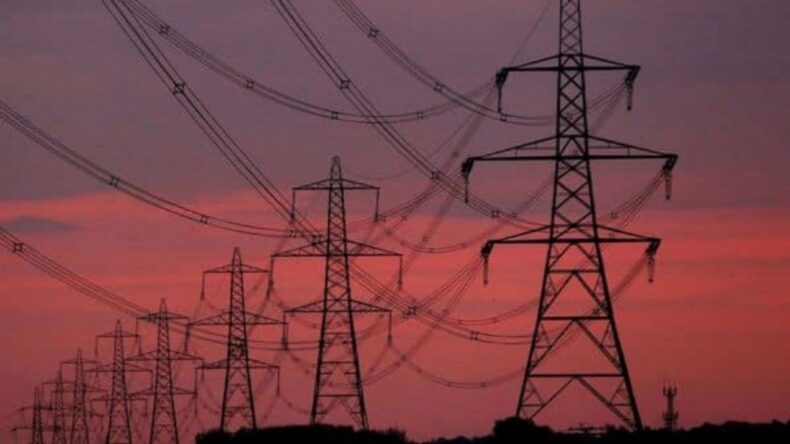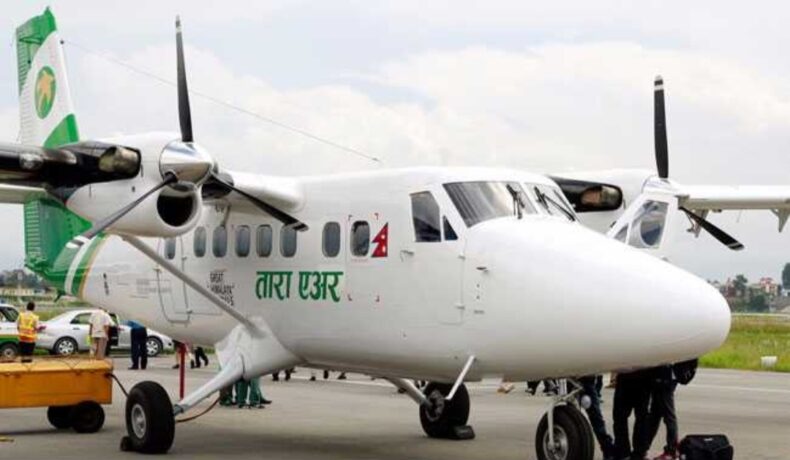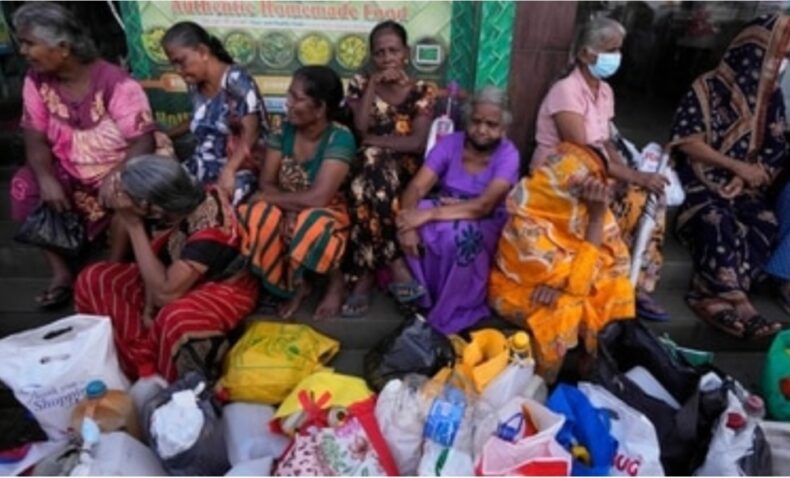Author: Amrita Sandhu
A well informed person is always the one who first analyse the situation and then make a informed decision. Being very professional about my work, I always keep myself and everyone updated.
In the wake of the COVID-19 epidemic, India has issued a warning about the “heightened” threat of biological and chemical weapons misuse, and has urged the international community must address the explosive growth of proliferation concerns. According to the report, new and developing technologies may raise the possibility of terrorist groups as well as other non-state actors gaining access to chemical and biological weapons (WMD). Concern on Mass destruction weapons “Terrorists and some other non-state actors accessibility to such weapons of mass destruction adds a critical dimension to the threats these weapons pose on international peace and security,” A Amarnath, a counsellor at India’s UN Mission, said on Tuesday. He stated that rapid evolution of proliferation dangers is a crucial topic that needs the international community’s attention, speaking at the United Nations security Council 1540 Committee open consultations on proliferation of nuclear, chemical, and biological weapons.”New developing technologies may enhance the risks of terrorist groups and non-state actors gaining access to WMD.” Terrorists as well as other non-state groups’ increasing ability to gain access to delivery systems such as missiles & unmanned/ uncrewed aerial systems has increased the dangers of terrorism utilising WMDs. The development pace of weapons “Similarly, in the COVID era, the threat from biological agents & chemicals being used as weapons has grown in tandem with developments in chemistry and biology. Such open consultations is a good place to talk about these concerns as well as how the Committee might help member states,” he said. In December 2019, a novel coronavirus outbreak was first identified in Wuhan, central China, and quickly spread to be a pandemic. As per Johns Hopkins University, approximately 530,022,000 instances of COVID-19 have still been reported worldwide, with over 6,292,000 persons dying as a result of the disease. He emphasized that India places a high value on the fulfillment of Resolution 1540. “We have developed a solid law-based, national framework that implement the provisions underlying Resolution 1540 because of our longtime commitment to global nonproliferation,” Amarnath added. Recognizing the importance of industry, academia, or other key stakeholders for assisting States in implementing Resolution 1540, he said India has been holding outreach activities involving these groups at the national and regional levels.
Sergei Lavrov, Russia’s foreign minister, said on Tuesday that’s it’s on to the West & Kyiv to tackle a rising global food crisis brought on by the fighting in Ukraine. Supplies of wheat and several commodities from two countries have been hampered as a result of Russia’s attack in Ukraine & Western sanctions, raising fears of global hunger. Restrictions on Russia by West During a visit to Bahrain, Lavrov told reporters that Western nations “created a number of artificial problems”by blocking the ports for Russian ships, affecting logistics and financial systems.”They need to critically examine if doing public relations on the topic of food security is more important to them or taking concrete actions to fix this problem,” he continued. Lavrov also urged Ukraine to demine its territorial waters in order to allow ships to sail through the Black & Azov seas safely. “If the demining issue is handled, Russia’s naval forces would ensure that these ships can sail freely into Mediterranean and on to their destinations,” Lavrov added. Russia and Ukraine supply around a third of the world’s wheat. President Vladimir Putin informed Recep Tayyip Erdogan on Monday that Moscow was willing to collaborate with Ankara to free up marine shipping from Ukraine, and he blame global food shortages upon “short-sighted” Western policies. Kremlin blames West The Kremlin has dismissed charges by the United States and the European Union that Russia has halted grain supplies from Ukraine, accusing the West of instigating the situation by applying sanctions.”These accusations are totally denied by us. On the contrast, we hold Western countrie s responsible for the events that led to this “In a conference call, Kremlin spokesman Dmitry Peskov remarked. Moscow has asked the west to lift sanctions that it claims are preventing grains exports from Ukraine. The European Central Bank (ECB) recently cautioned that the conflict among Russia and Ukraine has increased financial stability concerns. Financial crisis rise due to conflict According to the ECB’s Financial Stability Review report, as financial stability conditions worsen, commodity prices price shocks, exacerbated by Russia’s action in Ukraine, heighten concerns to post-pandemic growth, inflation, & financial conditions with in euro area and globally. “Rising inflationary pressures has threatened to stifle the recovery’s pace in 2022 since late 2021. “Since the commencement of the Russia-Ukraine conflict, upside risks on euro area inflation i& downside risks in growth have risen considerably,” it stated. Read More- Ukraine: Russian Troops Enter Severodonetsk
31 May, Islamabad(PTI) on the orders of deposed Prime Minister Imran Khan, Pakistan ‘s Defence Minister Khawaja Asif alleged that demonstrators in Azadi March were carrying not just guns but also automatic weapons. What exactly was the situation there? Khan led hundreds of followers of the Pakistan Tehreek-e-Insaf party towards Islamabad in a protest last Wednesday, intending to organise a sit-in till new elections were announced, but the sit-in was abruptly called off at the last minute after arriving in the capital. He had, however, threatened to return in six days if the administration did not announce a date for emergency elections in the country. Asif claimed in a Monday interview with Geo TV that the demonstrators at the Azadi march were carrying firearms on Khan’s orders. Imran khan’s views “Imran Khan is correct; his party members were not only armed, but they were also armed with automatic weapons. “Imran Khan had requested that protesters bring firearms to the long march, but the administration was aware of this,” he claimed. Asif was responding to a query on Khan’s recent interview with a private news channel, in which he revealed that members of his party was carrying firearms even during ‘Azadi March.’ Khan was dismissed from power in April after a no-confidence vote, but he rejected to accept defeat, accusing the US of being behind the overthrow of his government. Since then, the PTI chairman has now been protesting and pushing for new elections, claiming that the current coalition government was “imported” and not a legitimate representative of Pakistanis. Imran Khan’s ‘azadi demonstration,’ scheduled for May 26, block the entrance to cities and places en route towards Islamabad and arrived early the next morning. The city quickly resembled a battleground, with police firing tear gas in response to reported acts of destruction by Khan’s Pakistan Tehreek-e-Insaf workers (PTI). The Pakistan Army was dispatched to Islamabad’s Red Zone, which houses government offices including structures such as the Supreme Court, the PM’s residence, and other important structures. That morning, Imran Khan arrived to D Chowk in Islamabad. Shortly after, khan called off this march & gave Shehbaz Sharif’s government pakistan six-day deadline to call new national elections. He stated he was resigning as this government was attempting to divide the people and the police by holding the march. Read More : Pakistan’s parliament approves bill for remove Imran Khan’s elections reforms
In August, India’s Central Electricity Authority (CEA) forecasts a peak power demand of 214 GW. Furthermore, the average energy consumption for the month of May might rise to 1,33,426 million units, higher than it was in May. (MUs). According to CREA, an independent research organization decreased pre-monsoon coal storage in thermal power plants in India indicates a new power crisis in July-August. The present coal stock in pithead power stations is 13.5 million tonnes, with a total of 20.7 million tonnes at all power plants nationwide. The CREA Report According to the Centre for Research on Energy and Clean Air’s (CREA) report, “Failure to load: India’s power crisis is a coal management crisis,” coal power plants are “in no position to address even a minor spike in power demand” and “there is a need to plan for coal transportation well in advance.” In August, the CEA forecasts a peak power demand of 214 GW. Furthermore, average energy consumption could rise to 1,33,426 million units, up from 1,33,426 million units in May. (MUs). “The arrival of the south-west monsoon will exacerbate the difficulties in mining and transporting coal through mines to power plants. In July-August 2022, if coal inventories are not restored to acceptable levels before the monsoon, the country may face once again another power crisis “According to CREA. “The data clearly show that coal transport and management were insufficient to meet the growing demands from power sector… Despite adequate coal mining, thermal power plants were not adequately stocked, according to the trends “It was stated. The current status of India’s coal production In the financial year 2021-22, India produced a record amount of coal, 777.26 million tonnes (MT), up, from 716.08 MT in the previous year, a rise of 8.54 percent. In FY 21-22, the country’s total mineable capacity was over 1,500 MT, while the total output was only 777.26 MT, less than half of its capability. According to Sunil Dahiya, a CREA analyst, if there was still a true coal shortage, coal companies could easily increase production. The fundamental cause of last year’s power outage was power plant operators’ failure to stock enough coal before the southwest monsoon arrived. The time is critical since the monsoon floods coal mines, causing output and transportation to power plants to be hampered. Read More – India…
A Tara Air Twin Otter jet carrying 22 people from Pokhara to Jomsom, comprising four Indian citizens, two Germans, and 13 Nepali passengers, as well as a three member Nepali crew, lost communication with airport authorities early Sunday morning, according to news agency ANI. According to a statement released by Nepal’s civil aviation authority, the aeroplane with call-sign 9 NAET took off from Pokhara at 9:55 a.m. & lost contact at 10:07 a.m. in the Ghodepani area. The current Status According to a Jomsom Airport air traffic controller, authorities get an unconfirmed report of a loud noise in Ghasa, Jomsom. “Locals in Titi have contacted to say that they heard a strange sound, as if there had been a bang. We’re sending a chopper to the area to help with the search “According to Ram Kumar Dani, DSP from Mustang’s district police office. “The Nepalese government has sent in private chopper from Mustang & Pokhara to look for the missing plane.” “The Nepal Military chopper is being prepared to be sent for the search operation,” said Phadindra Mani Pokharel, a spokeswoman for the home ministry, according to ANI. According to Nepali Army spokesperson Narayan Silwal, a Mi-17 helicopter is recently left towards Lete, Mustang, the likely crash site of missing Tara Air plane. The Indian embassy, Nepal stated it was in contact with the Indian passengers’ relatives. Mustang—the fertile plain Mustang is one of the Himalayan nation’s hilly and fifth-largeat districts, and it is home to the Muktinath Temple pilgrimage. The district, often called the “Land Beyond the Himalayas,” is located in Western Nepal’s Himalayan region, in the Kali Gandaki valley. The historic territory of Mustang (meaning “fertile plain”) is primarily dry and parched. This area contains the world’s deepest valley, which stretches three miles vertically between the Dhaulagiri and Annapurna ranges. The Safety records of Nepal’s aviation Due to a lack of training and upkeep, the impoverished Mountainous nation has a dismal air safety record. According to the AFP news agency, the European Union had barred the Nepali airlines from flying in its airspace due to safety concerns. The country also contains many of the world’s most isolated and difficult runways, which are flanked by snow-capped hills and have approaches that even experienced pilots find difficult. Tara Air’s Twin Otter aircraft crashed in hilly western Nepal in February 2016, killed the 23 people on board. Shortly after taking off, the plane lost communication with control tower on its way from Pokhara to Jomsom. The majority of the passengers were Nepalese. A US-Bangla Airlines flight crash landed Kathmandu’s international airport in March 2018, killing 51 passangers. Three others died the next year when a jet skidded off from the runway and collided with two helicopters as it took off close Mount Everest. Read More – Nepal: Plane with 22 on board, including…
In a joint statement, the US, Japan, and South Korea strongly criticised North Korea’s recent ballistic missile launches, following the US decision to impose sanctions on people linked to Pyongyang’s nuclear programme.On Thursday, Russia and China blocked a US-led push to tighten UN sanctions on North Korea after it pulled out nearly 2 dozen ballistic missiles this year. The statements of Security Council for North Korea It was the first time the Security Council had publicly split over North Korea when the first sanctions were implemented in 2006. “Since September 2021, the DPRK has substantially enhanced the frequency and scale of all its ballistic missile launches,” said US State secretary Antony Blinken, Japanese Foreign Affairs minister Hayashi Yoshimasa, & South Korean Foreign Affairs minister Park Jin, referring to the country by its formal name, the Democratic People’s Republic of Korea. The Far Eastern Bank & Bank Sputnik, also Russian institutions, were classified as conducting transactions supporting North Korean organisations, according to the restrictions. Statements of Treasury secretary In a statement, Under Treasury secretary for Terrorism & Financial Intelligence Brian E Nelson said that the sanctions targeted “supporters of the DPRK’s WMD & ballistic missile programmes, and also foreign financial institutions which have knowingly provided substantial financial services to the DPRK government.” The US Treasury further sanctioned Jong Yong Nam, a Belarusian, for an organisation linked to North Korea’s already blacklisted Second Academy of Natural Sciences (SAN S) & Air Koryo Trading Corporation (AKTC), that it claimed was used to to provide the Ministry of Rocket Industry to electrical components and dual-use goods like transistors & hydraulic system components. According to the Report According to the report, AKTC was also utilised to ship expensive products to North Korea. A request for response from Reuters news agency was not immediately returned by North Korea’s UN mission in New York. The US, South Korea, and Japan all stated that they were “open to talks with DPRK without preconditions” and that they will strengthen trilateral cooperation in the pursuit of complete denuclearization of the Korean Peninsula. They also expressed their “sad disappointment” over the Security Council draught resolution’s failure, noting that 13 of the 15 members of the council had voted in favour of it. The United Nations General assembly will now take up the matter. Read More : North Korea fires three missiles hours after Biden’s departure
Sri Lanka received Russian oil on Saturday to restore operation at the country’s lone refinery, which might eventually be subjected to a European embargo, according to the energy minister. The island nation is experiencing its worst economic downturn since independence, with fuel and other essential goods shortages making life difficult for its 22 million residents. Supply from Russian Petroleum The state-owned Ceylon Petroleum Corporation (CPC) refineries was closed in March as a result of Sri Lanka’s foreign exchange crisis, which prevented the government from funding crude imports. The Russian petroleum delivery had been waiting for almost a month offshore of Colombo’s port because the country had been unable to gather $75 million to pay for it, according to energy minister Kanchana Wijesekera. Amid US sanctions against Russia banks and a geopolitical outcry at Russia’s invasion of Ukraine, Colombo is in negotiations with Russia to arrange direct supply of petroleum, coal, fuel, and petrol. After being purchased off credit using Dubai-based i termediary Coral Energy, some 90,000 tonnes of Siberia light crude will be shipped to Sri Lanka’s refinery. According to Wijesekera, Ceylon Petroleum Corporation (CPC) is currently $735 million in debt to suppliers, and no one has expressed interest in bidding for its oil tenders. Searching for an alternative He further said that all Siberian grade wasn’t just an ideal match for such refinery, which is designed to process Iranian light crude, however no alternative supplier was ready to give credit. Despite this, Sri Lanka will issue new supply tenders in 2 weeks, just before supply of Siberian light goes out, according to Wijesekera.In about two days, the Sapugaskanda refinery in Colombo’s outskirts will reopen. On Monday, European Union officials will meet in Brussels to discuss a new wave of penalties against Russia related to the Ukraine war, along with an oil embargo. Russian oil has been subject to a US embargo, and its barrels have been trading at a significant discount to international benchmarks since the crisis began. The Persisting problems Long lines of cars have formed outside gas stations as a result of Sri Lanka’s economic crisis, with motorists waiting hours, if not days, for scarce supply of petrol and cooking gas. Its citizens also face severe shortage of supplied food and pharmaceuticals, as well as record inflation and protracted daily blackouts. Anti-governmental rallies became violent earlier this month, killing nine people and injuring dozens more. Saturday marked the 50th day of a protest against President Gotabaya Rajapaksa’s offices near Colombo, demanding his resignation over government’s economic mismanagement.
Imran Khan, Pakistan’s deposed prime minister, handed the Shehbaz Sharif government a six-day deadline to dissolve provincial legislatures and call new general elections, claiming that “Imported government” fails to do so, he might come to the capital with the “entire nation.” The government tactics Khan slammed out at the government for adopting tactics including raids and arrests to block his party’s march at a rally of thousands of Azadi March’ demonstrators on Jinnah Avenue on this Thursday morning, even as he hailed the Supreme Court (SC) for making observations of the matter.The government used tear gas on nonviolent protesters, searched our homes, and violated our privacy, but I have witnessed the nation liberate itself from the fear of enslavement, he said.”My message to the imported administration is to disintegrate assemblies and call elections immediately; otherwise, I will return to Islamabad in six days.” Point of view of Imran Khan Khan wondered even in a democracy peaceful demonstrations are not allowed and people are subjected to tear gas shelling, police raids, and arrests, noting that the Supreme Court judges bear “great responsibility.””I had decided to sit till the government diffuses assemblies and announces elections,”he said, adding that “from what I’ve seen in the last 24 hours, they (the government) are leading the country towards anarchy.” He also claimed that the government was attempting to create a divide between the people and the police. According to the Dawn daily, Khan stated the authorities would be glad if he arranged asit-in at Islamabad since it would result in conflicts between both the people and the police and army. He claimed that five members of the Pakistan Tehreek-e-Insaf (PTI) was killed in clashes during the party’s march, one of whom fell off the Attock bridge amid tear gas shelling and the other of whom was pushed into the Ravi river.He further stated that he had received the information that three people had been slain in Karachi. “I’m pleading with the judiciary once more to rescue your FIA” (Federal Investigation Agency). “No FIA member will investigate those powerful in the future if he will end up like Dr Rizwan and Asghar,” he warned. Read More-https://tdznkwjt9mxt6p1p8657.cleaver.live/pakistani-police-clash-with-the-supporters-of-ex-pm-imran-khan/
The recent events in Sri Lanka have put its neighbours, such as India, and friends, such as Japan, in a bind. Sri Lanka is India’s next-door neighbour, and any disruption that nation is likely to have a direct influence on India, particularly in the country’s southern regions. Sri Lanka has indeed been engulfed in a financial trap. Because it was unable to return one of its Chinese loans on time,it had no choice but to hand over operation of the its Hambantota port to a Chinese business in exchange for a 99-year lease. The crucial role of India and Japan Sri Lanka has requested emergency financial assistance from International Monetary Fund (IMF), and talks on a bailout have already begun. The government already has notified the creditors that it will defaults on $35.5 billion in foreign debt for a period of time. Sri Lanka received a $1 billion USD line of credit from India in March 2022 to purchase vital commodities. State Bank of India is providing this “short term concessional credit facility” following an agreement made by the two countries during Sri Lanka Finance Minister Basil Rajapaksa’s visit to India in March. New Delhi also has agreed to contribute an increased $500 million in financial aid to SriLanka to help it purchase fuel, as the IMF’s assistance will take time to arrive. For quite some time, Japan and India have indeed been coordinating their activities in Sri Lanka. Sri Lanka, Japan, and India struck an agreement in 2019 to create the Colombo Port’s East Container Terminal, which is expected to cost around $500 million to $700 million USD. Sri Lanka then cancelled the agreement, and an alternative facility, the West Container Terminal (WCT), was replaced for Indian and Japanese needs.The main cause of Sri Lanka’s economic disaster is financial mismanagement by successive governments, which established and perpetuated a dual deficit: a budget deficit and a current account deficit. The root cause The Easter Bombings in 2019, which killed 269 people were injured dozens more while also wreaking havoc on the economy, worsened the situation further.The effect of COVID-19, which harmed the country’s tourism sector, severely affected the country’s income. In the aftermath of the outbreak, when several workers were laid off through their employers, remittances by Sri Lankans working overseas dried up as well.
According to a proposed meeting communique shown by Reuters, climate ministers from the G7 economic countries will consider agreeing this week to phase out polluting coal-fueled energy by 2030 and decarbonize their power sectors by 2035. The incursion on Ukraine by Russia, another major fossil fuel exporter, has prompted a rush among certain countries to purchase more non-Russian fossil fuels and consume more coal to reduce its dependence on Russian gas, elevating fears that its war’s resulting energy crisis would jeopardise climate change efforts. From Wednesday to Friday, the G7 Climate, Energy, and Climate Ministers will gather in Berlin. The promises made They will try to reach an agreement there on the promises to ensure that their immediate response to rising global energy costs and fuel supply concerns does not jeopardise longer-term efforts to reduce greenhouse gas emissions that are heating the world. The proposal also commits G7 countries to get a “net zero power sector by 2035” and to begin publicly reporting next year on how well they are meeting a previous G7 pledge to stop “inefficient” fossil fuel subsidies before 2025. Before it is acknowledged on Friday, the document could change. According to sources acquainted with the discussions, both Japan and the US have stated that they will not accept the coal phase-out period. A representative from Japan’s Industry Ministry, which supervises local power production infrastructure, refused to elaborate on the G7 talks directly. Suggestions regarding Phase-out of coal A suggestion to phase out domestically unregulated coal power production by 2030, according to the official, would be incompatible with Japan’s economic plans. Japan wants to reduce coal’s part of its energy mix from 32 percent in 2019 to 19 percent by 2030. An official from the United States refuses to comment upon this continuing talks. “President Biden is taking bold steps to accomplish the nation’s objective of a carbon-free power sector by 2035, and he is leading on the international arena to assist our allies in achieving their climate goals,” the official added. Countries agreement to phasing out coal Germany as well as Canada have committed to phase out fuel by 2030, but france, Italy, and the United Kingdom have stated that they will do it sooner. Even though the US government’s aim to decarbonize the power grid before 2035 suggests coal plants will either close or utilise carbon capture technologies by this same date, neither the US nor Japan have set a deadline.
Contact us:
Copyright © 2024 Asiana Times. All Rights Reserved





